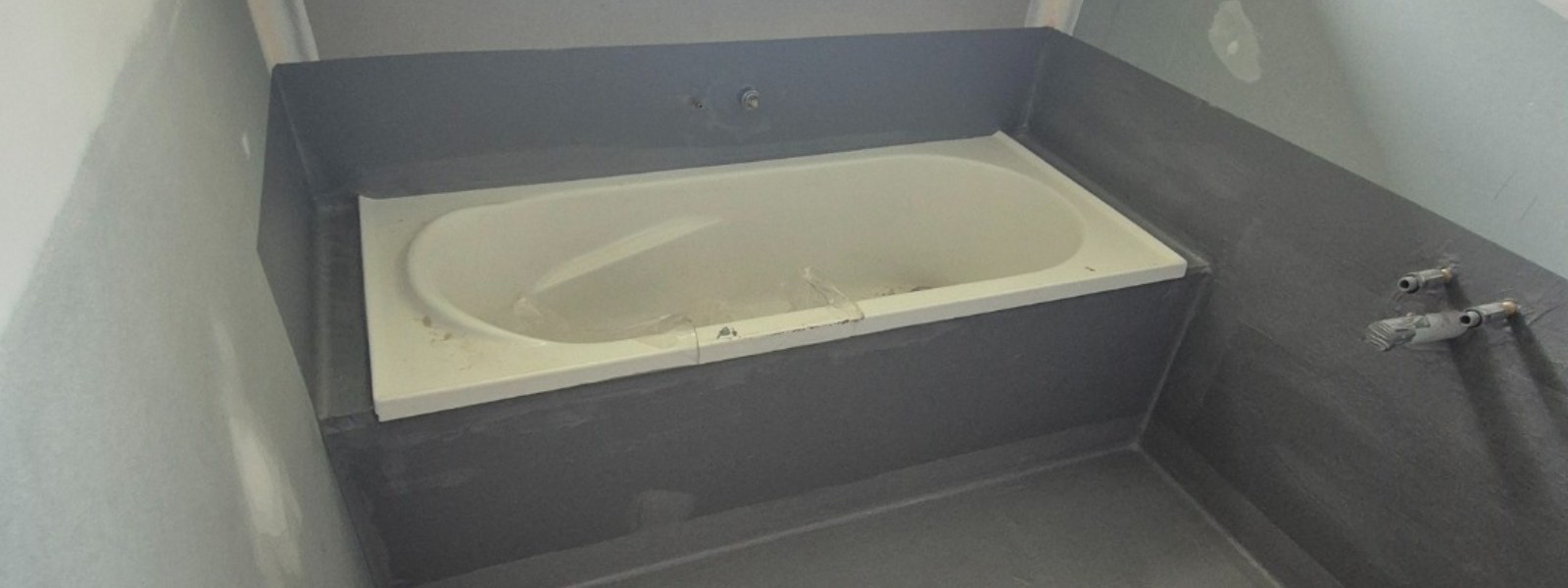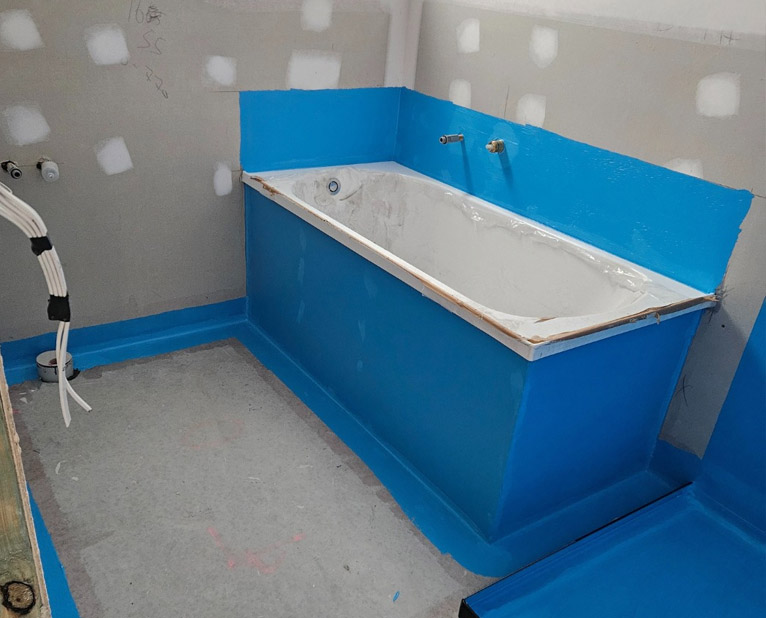The Basics of Waterproofing Your Aussie Bathroom Over Concrete
Waterproofing a bathroom is a crucial step in any Australian home renovation, especially when dealing with concrete slabs. The risk of water damage in these high-moisture areas is high, and using the right techniques and following Australian standards is essential to protect your home’s structure and avoid costly repairs. Many homeowners find bathroom waterproofing confusing, which can cause anxiety about doing the job correctly. This guide aims to simplify the process by combining real-world experiences with expert advice to provide a practical roadmap for success.

Common Concerns: Key Questions and Answers
The Bumpy Concrete Dilemma: Is a Smooth Surface Essential?
A common worry when waterproofing a bathroom over concrete is whether the concrete floor needs to be smooth. Insights from various experiences suggest that an uneven concrete floor is not necessarily a problem. You can create a smooth, sloped surface ideal for the shower area and doorway by:
- Applying two layers of waterproofing to both the floor and walls.
- Adding a screed layer to create a smooth surface.
- Applying another layer of waterproofing before tiling.
Screed or No Screed? Deciding the Order of Operations
The order in which waterproofing and screeding should be done can vary. Waterproofing can be applied either under or over the screed, or sometimes both methods are used. Each approach has its pros and cons:
- Under Screed: Reduces the chance of the tiler damaging the membrane, offers direct substrate protection, and is suitable for strong polyurethanes. However, the screed can stay wet if water stops fail, leading to potential efflorescence.
- Over Screed: Prevents severe efflorescence, keeps the bedding dry, and is ideal for uneven substrates. The downside is a higher risk of tiler damage and potential pooling issues.
- Both Methods: Provides enhanced protection and is suitable for moisture-prone areas, though it increases cost and time and carries the risk of trapped moisture if not detailed correctly.
Australian Standards: What You Need to Know
Understanding the relevant regulations is crucial for bathroom waterproofing in Australia. The Australian Standard AS 3740 and the National Construction Code (NCC) outline specific requirements for waterproofing in wet areas to prevent health risks and building damage from internal moisture. Key points include:
- Shower Areas: The entire floor must be waterproofed, and the walls must be waterproofed to a minimum height of 1800mm above the floor.
- General Bathroom Floor: Must be water-resistant for concrete, with falls to waste having a minimum gradient of 1:80 and a maximum of 1:50.
- Wall/Floor Junctions and Penetrations: Must be waterproof within the shower area.
Licensing Requirements: Why You Need a Professional
Australian building codes require that shower or bathroom waterproofing work be performed by licensed professionals. Attempting to do it yourself without the proper credentials can result in fines, insurance issues, and serious water damage due to improper application. Licensed waterproofers ensure that the work complies with Australian standards and provide a certificate of compliance, which is essential for building approvals and insurance claims.
Puddle Flanges and Bond Breakers: Essential Components
Two crucial components in bathroom waterproofing are the puddle flange and the bond breaker:
- Puddle Flange: Creates a secure connection point for the waterproofing membrane at the floor drain, ensuring proper drainage.
- Bond Breakers: Applied at all corners, where walls meet floors, and at transitions between different building materials to manage movement within the building structure, preventing the membrane from cracking or tearing.
Wall-to-Floor Protection: Ensuring Comprehensive Coverage
Comprehensive bathroom waterproofing involves addressing both floor and wall areas. Australian standards specify that within the shower area, walls must be waterproofed to a height of at least 1800mm above the floor. Properly sealing all wall junctions and joints, especially within the shower area, is essential to prevent water ingress and significant damage over time.
Curing Times: Patience is Key
Allowing enough time for the concrete and screed to properly cure and dry is crucial for successful waterproofing. Curing is a chemical process that strengthens the concrete or screed over time. Waterproofing should ideally be applied only after the concrete has cured adequately to prevent moisture from being trapped beneath the membrane, which can lead to adhesion problems and blistering.
Choosing the Right Waterproofing Membrane
The Australian market offers a wide array of waterproofing membranes, which can be overwhelming for homeowners. Understanding the different types available and their characteristics is essential for making an informed decision:
- Liquid-Applied Membranes: Such as acrylic, polyurethane, and bitumen, are applied as a liquid using a brush or roller and then cure to form a seamless, watertight barrier. Acrylic-based membranes are relatively inexpensive and suitable for internal wet areas. Polyurethane membranes are known for their excellent flexibility and durability, making them ideal for areas subject to temperature fluctuations. Bitumen-based membranes offer good resistance to environmental stresses. Liquid membranes are particularly versatile for irregular surfaces and around penetrations.
- Sheet Membranes: Often made from materials like rubber or PVC, come in rolls and are adhered to the substrate. They are known for their high tensile strength, making them suitable for large, flat surfaces such as floors. While they offer excellent protection, their installation can be more labour-intensive than liquid membranes.
- Cementitious Waterproofing: Involves applying a cement-based compound that forms a rigid, waterproof layer. These are generally easy to apply and are often used in areas like water tanks and basements where flexibility isn’t a primary concern.
Ensuring Long-Term Durability
Achieving a waterproofing system that stands the test of time involves using high-quality waterproofing membranes that comply with Australian Standard AS/NZS 4858. Proper surface preparation, consistent application techniques, and protecting the installed membrane from damage during subsequent renovation stages are key factors in ensuring long-term durability.
DIY vs. Hiring a Pro: Making the Right Choice
While DIY waterproofing might seem like a way to save on labour expenses, it’s important to consider the potential risks involved. Hiring a licensed waterproofer for your bathroom offers several significant advantages, including compliance with Australian standards and the provision of a certificate of compliance, which may be required for building approvals and insurance purposes.
Conclusion
Waterproofing your bathroom over a concrete floor is a critical undertaking that requires careful planning, a thorough understanding of Australian standards, and meticulous attention to detail. By following expert best practices and considering the shared experiences of others, you can ensure a long-lasting and watertight bathroom. For professional assistance, consider reaching out to Superior Waterproofing, specialists in Bathroom Waterproofing, to ensure your project is completed to the highest standards.
